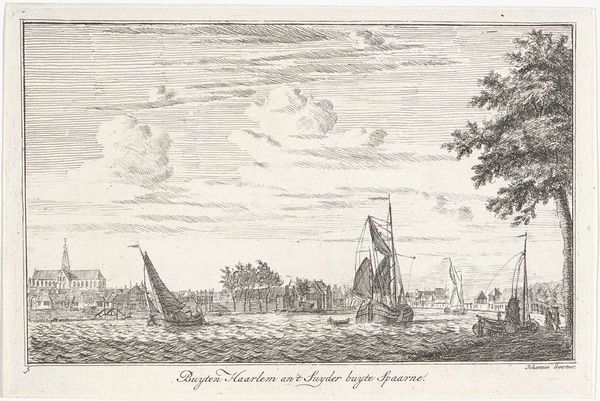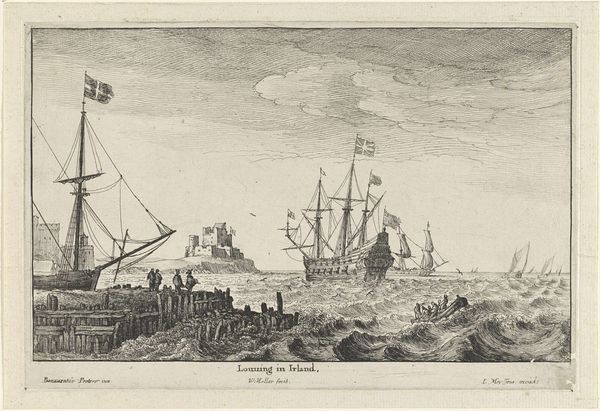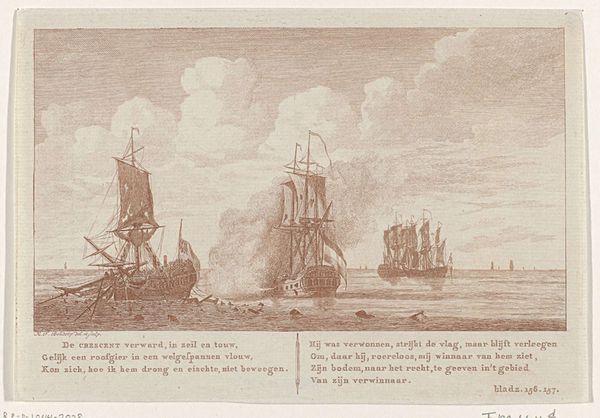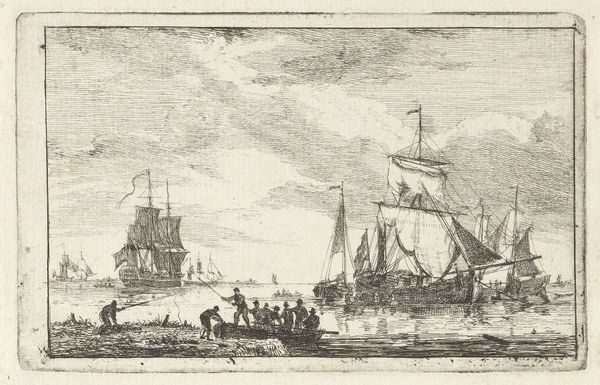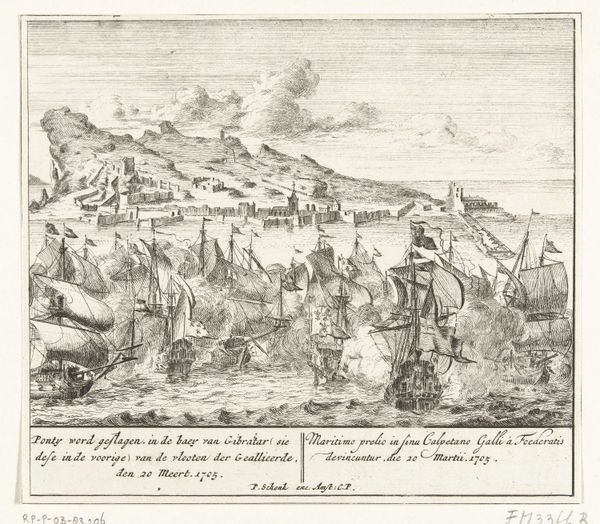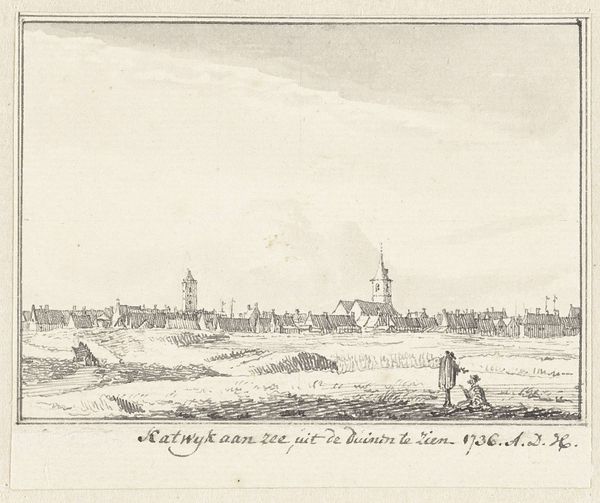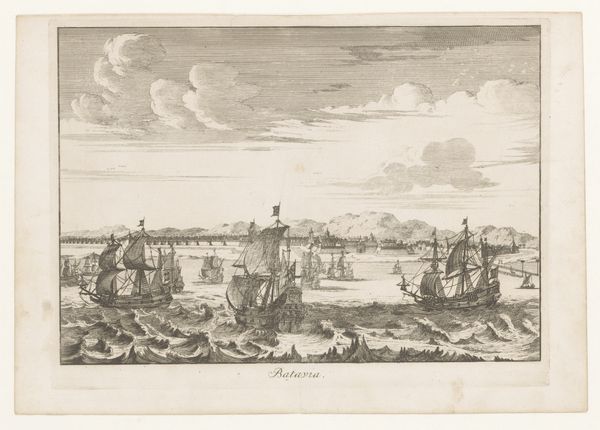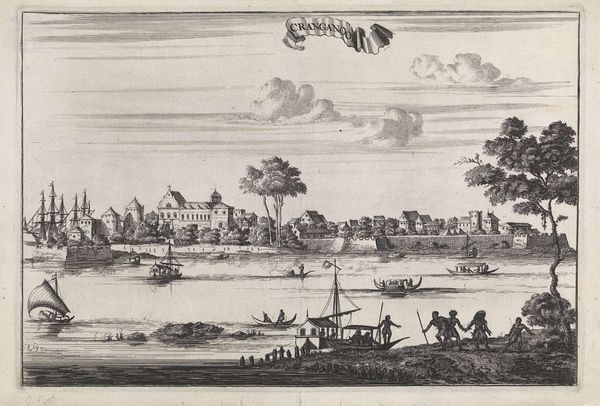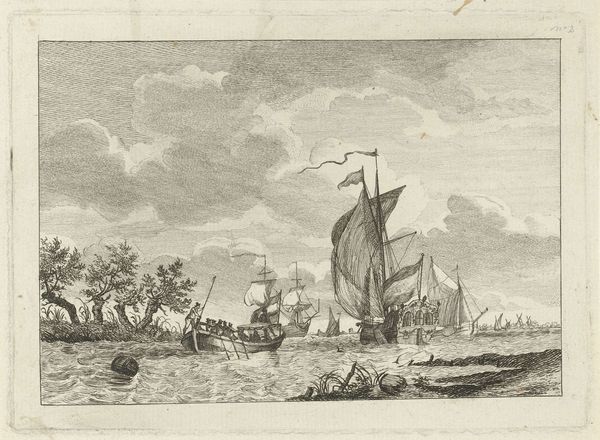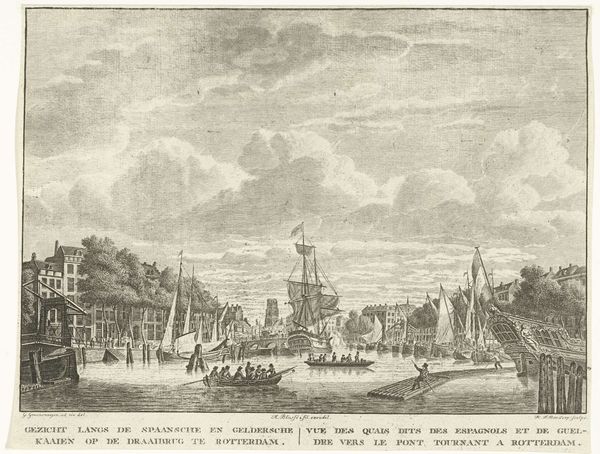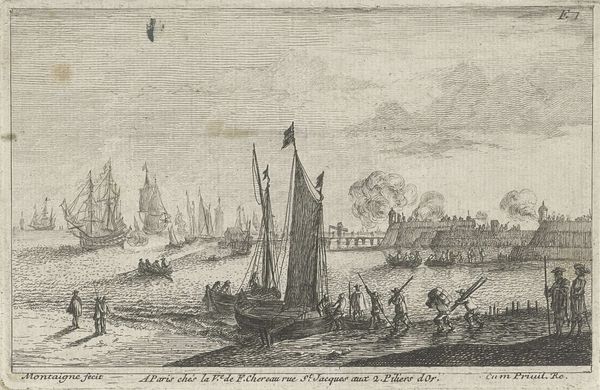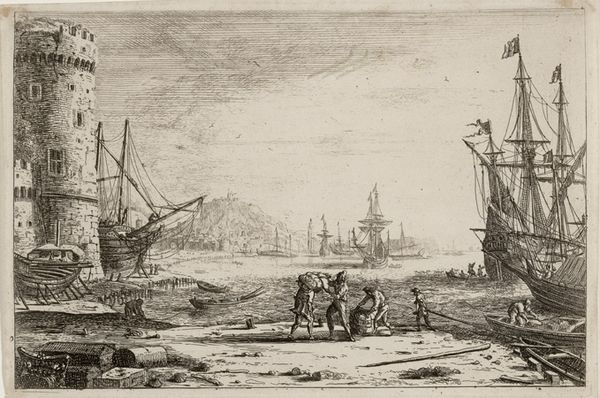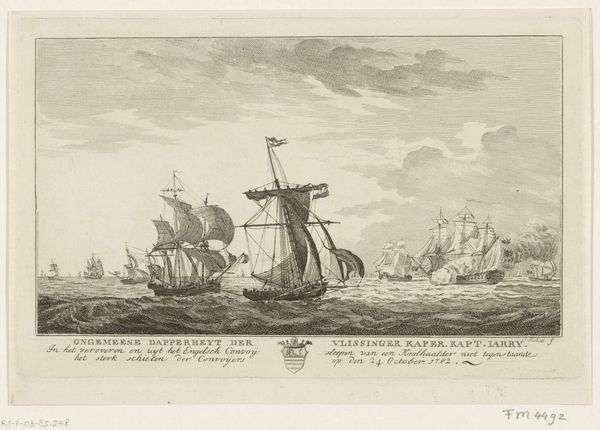
print, engraving
#
dutch-golden-age
# print
#
landscape
#
cityscape
#
engraving
Dimensions: height 154 mm, width 230 mm
Copyright: Rijks Museum: Open Domain
Editor: This is "Gezicht buiten Haarlem over het Spaarne" by Johannes Swertner, from 1763, an engraving. It's a beautifully detailed scene; the craftsmanship feels delicate but incredibly precise. What strikes me is how this piece illustrates everyday life; What's your perspective? Curator: Looking at Swertner’s print, it's crucial to consider the labor and material processes inherent in 18th-century printmaking. Engraving was a highly skilled craft, demanding precision and time. Consider the division of labor; Swertner likely relied on others for paper production, ink preparation, and distribution. These aspects challenge any romantic notions of the artist as a solitary genius and redirect our focus to the modes of production and their social implications. Editor: That makes sense. Seeing the windmill, it must represent advancements in industry. How would you interpret the materials used in relation to the content? Curator: The use of engraving as a medium isn't incidental; the replicability of prints democratized images. This availability contrasts sharply with painting, reserved for the elite. "Gezicht buiten Haarlem over het Spaarne" highlights how technological advancements can reshape cultural consumption and the very definition of art, as we see here a common scene of industrialization, contrasted by leisurely figures. Can we really separate high art from the everyday crafts if the intention behind the piece is to highlight that relationship? Editor: That's fascinating – a whole different way of considering the artwork. I didn't think about how the print itself plays a role. Thanks! Curator: Indeed, analyzing the means by which art is produced and consumed provides invaluable insights into its broader cultural and economic context. It’s a reframing, looking past traditional artistry, towards tangible production methods.
Comments
No comments
Be the first to comment and join the conversation on the ultimate creative platform.
